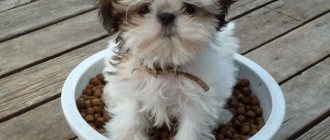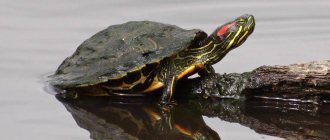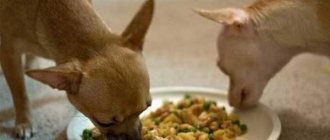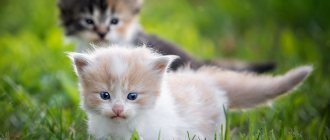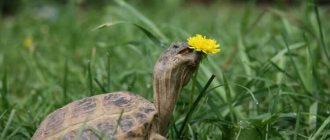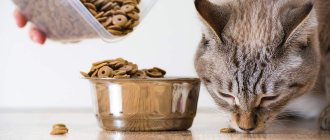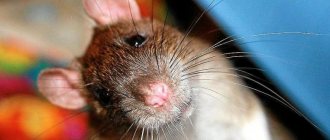At home, many people keep land turtles - cute reptiles with an interesting wayward character. In the wild, turtles forage on their own, eating healthy and varied foods. The daily diet of a pet reptile should also be balanced and complete, but in this case the owner is responsible for providing food for the turtle.
In the article we will talk about the features of feeding land turtles, main and additional food, healthy and harmful foods, food of animal origin, plant foods, ready-made artificial food, vitamins and mineral supplements, how many times a day to feed, whether it is necessary to give the turtle water.
Specifics of the turtle menu depending on their species
There are several species of land turtles, which are often kept at home. Each species has specific dietary preferences. Let's take a closer look.
Types of turtles and preferred food:
1. Central Asian land turtle - feeds exclusively on plant foods. Sometimes it can feast on insect larvae. Such reptiles should absolutely not be given food of animal origin.
2. Mediterranean turtles are vegetarians by nature, so their main diet is fresh vegetables, herbs, pieces of fruit and healthy plants.
3. Egyptian tortoise - the diet of this reptile consists of various herbs, plant flowers, leaves, and roots.
Predatory turtles
The diet of these pets consists of 90% meat. Trionics, aquatic and young red-eared turtles, as well as marsh turtles belong to this species.
These pets should be offered lean fish, beef, chicken, and fish liver. Adults can eat large pieces; for young turtles, it is better to cut their food into smaller pieces.
Turtles eat seafood raw; fish also does not need to be thermally processed.
Pork, beef, sausage, minced sausages, cheeses, bread, fruits and fatty fish are prohibited for predatory turtles. It is best to feed with prepared dry food.
How often and at what time to feed
It is recommended to feed land turtles at the same time. For the first year of life, young individuals are fed 2 times a day, and adult representatives - every other day.
The volume of one serving is determined based on how much food she can eat in 30 minutes. Natural products are given in small pieces in the amount of 1-3 pieces. If the turtle does not eat a portion during a half-hour meal, next time you can slightly reduce the size of the pieces. In any case, the owner will have to focus on the individual appetite of the domestic reptile.
It is recommended to place food for the turtle in a special feeding bowl. You should not feed your reptile by hand. Uneaten pieces of food are removed, and the container is washed so that potentially dangerous microorganisms do not breed in it.
You should not feed your turtle spoiled or uneaten foods, as they can cause poisoning to the body.
Rules for feeding land and aquatic turtles
Answers to the main questions that arise when feeding turtles: size of food, quantity, temperature, what food to give, where to feed, feeding.
Feed size
Depending on the size of the reptile, the food should be finely, medium or coarsely chopped. The size of one piece should be less than half the turtle's head. Aquatic turtles tear large pieces with sharp claws, so they can be given larger food. Lettuce and weeds do not need to be chopped.
Amount of food for turtle
Give the predatory turtle as much food as it can eat in half an hour. Remember this amount and give her that much every time. The approximate amount of food per feeding should be no more than half the turtle's shell.
Feed temperature and condition
Room temperature (do not give food directly from the refrigerator or not completely defrosted), food only raw (heat treatment is not allowed).
Turtle Feeding Frequency
Young turtles up to 2 years old (or up to 7 cm in length) are fed every day with plenty of calcium in their food, and adult turtles - 2-3 times a week. Perishable food can be left in the terrarium for no more than 2-3 hours.
What to feed a turtle
Don't feed your turtles just one type of food! Mixes only! Don't spoil turtles - don't give them the tastiest things and the things they love most. If the turtle eats only one type of food and refuses another, offer it a mixture of “favorite” and “unloved” foods, or let it fast for a while (usually a few days is enough).
Even if a turtle eats something with appetite, this does not mean that it can be given it to eat (milk, bread, cheese).
How to give vitamins and calcium
Aquatic turtles should receive vitamins and calcium from nutritious food; land turtles should be given vitamins and calcium in powder. Vitamins and calcium should not be given in liquid or tablet form. Vitamins and calcium are mixed with food and given to the turtle by hand or in a bowl. It is recommended to put a cuttlefish bone (sepia) in an aquarium or terrarium, then turtles with a lack of calcium will bite off a piece of it, replenishing the balance.
Feed colors and palatability
The color of the food may also play a role: turtles are good at distinguishing colors and prefer yellow, orange and red. If you add pumpkin, mango, oranges, melon, tomatoes, red peppers to the food mixture (provided that the turtles are happy with the smell), the mixture will look more appetizing to them (sweet fruits can only be given to tropical turtles, not steppe ones).
Where to feed the turtle
For land turtles, food is placed in a feeder; for freshwater and sea turtles, food is given from tweezers, thrown into the water, or placed on a bank near the water. Freshwater turtles should be trained to take food from the shore. Then it will pollute the water less and vitamins and calcium can be added to it. You can also feed turtles in a separate tank, basin or bathtub, leaving them out of the aquarium for 1-2 hours. Then the water stays clean longer .
Feeding
In addition to plant food, land turtles can be given grass meal from alfalfa. Directions for use: pour drinking water at room temperature, mix with main food (salad, fresh vegetables). It contains calcium, vitamins A, D, E, B1, B2, as well as various microelements. To prevent the water in the aquarium from spoiling
Place aquatic turtles in a separate container with aquarium water (aquarium tank), where you feed them. After feeding, the turtles should be placed back in their original aquarium, and the water from the feeding container should be poured into the toilet.
What time of day should you feed your turtle?
Since most turtles are diurnal, they should be fed in the morning or afternoon. It's better in the morning, because... The normal biorhythm of a reptile in temperate latitudes is as follows: warmed up - ate - started the digestion process BEFORE the cool of the evening. The metabolic rate of reptiles directly depends on temperature. And by feeding the turtle shortly before turning off the lamps, there is a risk of creating conditions for the food to settle in the stomach as dead weight, without complete breakdown by digestive enzymes. This applies to land turtles and those freshwater turtles that are characterized by regular basking (red-eared and marsh turtles among them). For the majority of siltfish, trionics, two-clawed and other predominantly aquatic species, if the water temperature is stable throughout the day, the issue is not fundamental.
If the turtle refuses to eat
A turtle may not eat because it is cold, stressed, or sick. If you only have her for a couple of hours or days, then she just needs time to get used to the new place. If she does not eat for more than 3 days, but is active and looks normal, check whether you are following the conditions for keeping her at home correctly. If your turtle is inactive, has a runny nose, swollen eyes, or is sneezing or blowing bubbles through its nose, take it to a veterinarian-herpetologist.
How long can a turtle go without eating or drinking?
A healthy adult turtle can go up to two weeks without eating without significant health effects. A young turtle (adolescent) may not eat for up to a week. Baby - from 3 days to a week. Therefore, nothing bad will happen if you leave an adult red-eared slider for a week or 1.5 during your vacation. However, it is very advisable to add live fish, snails and algae to her aquarium, so that if she gets hungry, she can get food for herself. Aquatic turtles are more dependent on water than land turtles, but they can go up to a week without water. Therefore, if you lost a turtle in an apartment or are taking a turtle with you to another city by car, then the turtle will survive quite normally for several days. It is better not to leave completely aquatic turtles, for example, Trionics, without water for more than a couple of days.
Turtle eats too much
At different times of the year, turtles are active differently; with the onset of spring and summer, turtles begin to eat more in order to store fat for the winter, when they should be in biological hibernation. However, overfeeding is fraught with obesity and health problems. So how can you tell if your turtle is eating too much? Normally, a young tortoise (up to 10-12 cm) should receive food once daily. An adult turtle should receive food once every other day or two. The approximate amount of food is half the size of a turtle's shell. Aquatic turtles are given as much food as the turtle eats in an hour. The remaining food is removed or the turtle is returned from the nursery where feeding took place to its aquarium. Exhausted turtles (the skin is very loose from the paws) should be given food daily, bathed regularly (every day or every other day) and as much as they eat, you can add more protein (for land turtles this is beans). For turtles that are thick (bulge out of their shell and cannot hide in it) - food should be given every other day and food rich in proteins should be avoided.
Turtle eats soil
If a turtle eats grass soil, hay, paper, sawdust, then it does not have enough fiber. This can lead to intestinal blockage. If this has already happened, then you have to wait until she poops out what she has eaten. If your turtle loses its appetite, you should show it to a herpetologist. To avoid recurrence, give the turtle a supply of soft hay from meadow grasses. More radical measures: you can buy fiber in the diet section of supermarkets and add it to your turtle's food.
The turtle eats sand or stones if there is not enough mineral nutrition, that is, calcium. For the same reason, turtles try to find and eat something white, similar to natural calcium. Rocks and sand, not being calcium, will not dissolve in the turtle's belly. It’s good if they come out with feces, but if not, there will be intestinal blockage, which is very difficult to treat. If the turtle has eaten enough stones, simply bathe it more often in warm water and wait for the stones to come out on their own. But if she has lost her appetite, you should take an x-ray and see if the eaten stones remain in the turtle. If so, you should definitely take your turtle to the vet. You may need an enema or even surgery. To avoid a repeat of the situation, replace the soil in your terrarium with larger pebbles (the size of the pebbles should be 1.5-2.5 times larger than the turtle’s head) and do not release the turtle into places where there is sand and small stones. Also start feeding mineral reptile food with the food and add a cuttlefish bone to the terrarium. The turtle will gnaw it himself if he wants. This applies to both aquatic and land turtles.
Turtles living in the wild often consume rocks, but this does not cause problems. Why? The fact is that the fiber content in the diet of wild turtles is so high that they pass safely through the digestive system without accumulating in it. This was confirmed by x-ray studies. However, if the diet of captive turtles is low in fiber, this transport mechanism is disrupted, and it is then possible that sand, gravel or rocks can cause problems.
If your turtles' droppings are wet, runny, and lack fibers like these, then this is a clear signal to review and improve their diet. This not only affects the transport of rocks or sand through the digestive tract, but also significantly affects the overall health and growth rate of the turtles. Most pets grow too quickly and this in turn greatly affects bone density.
Animal feed
It is best to build a diet based on animal food. The reptile's menu consists of 60% or more animal protein .
A turtle will happily eat any meat, but it is preferable to feed it lean varieties: beef, rabbit or poultry .
Attention! It’s a good idea to diversify your pet’s diet with fish, beetles and plants.
Meat
The aquarium red ear eats meat with pleasure, but how to feed it correctly and how many times a day so as not to harm it?
The basis of the diet is necessarily lean meat . Fatty lamb and pork will lead to digestive problems, illness and even death of the pet. In addition to the protein itself, the diet should contain by-products:
- heart;
- liver;
- stomachs.
You can occasionally feed your turtle small mice.
Important! A diet of only unprocessed meat is a direct path to vitamin A deficiency and rickets. You need to diversify the list of products, then your pet will be healthy.
What kind of fish is suitable for food?
What fish should you feed your red ear? As with meat, you need to choose lean varieties. First remove bones that can harm the turtle, as well as entrails and scales.
In addition, before serving, it is recommended to dip the fish in boiling water for a couple of minutes so that the thiaminase enzyme coagulates.
A cocktail made from sea creatures would be a good addition to your diet , but you shouldn’t give it often.
Attention! The redfish will not get along in an aquarium with fish and snails - this is its natural food supply.
Insects
What do red-eared turtles eat besides food? You will be surprised - insects! In summer they add to the menu:
- grasshoppers;
- caterpillars;
- bloodworm;
- mealworm;
- gammarus;
- daphnia (but in this case it is better to turn off the filter for a while).
Other animal food options
You should not feed your turtle caught cockroaches or spiders.
Insects can be “stuffed” with toxic substances, which will certainly harm your pet.
Vitamin and mineral complexes
Turtles need calcium to form their shell. fill the need for microelements with the help of bone meal - it is mixed into the food.
A pinch is enough for young redears; for older ones, a teaspoon is “stretched” for a week.
In addition, special vitamins for turtles are added in accordance with the instructions, but the shelf life of such food is limited.
Errors
- Feed your reptile too often. This will cause overeating and indigestion.
- The reptile body is adapted to consume a certain type of food. You cannot feed a herbivore only meat, and a carnivore only fruits and vegetables.
- Giving your pet food too rarely. The individual will be weak, lethargic, inactive and susceptible to disease.
If you follow the rules of feeding land reptiles, they will have good health and longevity.
Most pet turtles have one common problem. The name of this problem is overfeeding
. In fact, the problem is no small one, since it is very important, to the extent of the turtle’s physiology, to feed it in moderation and in a balanced manner. A big mistake is how newbies treat turtles, believing that they need to be fed the same as other warm-blooded pets. You can't do that with turtles. It is very important to limit what they eat and this article will describe why.
